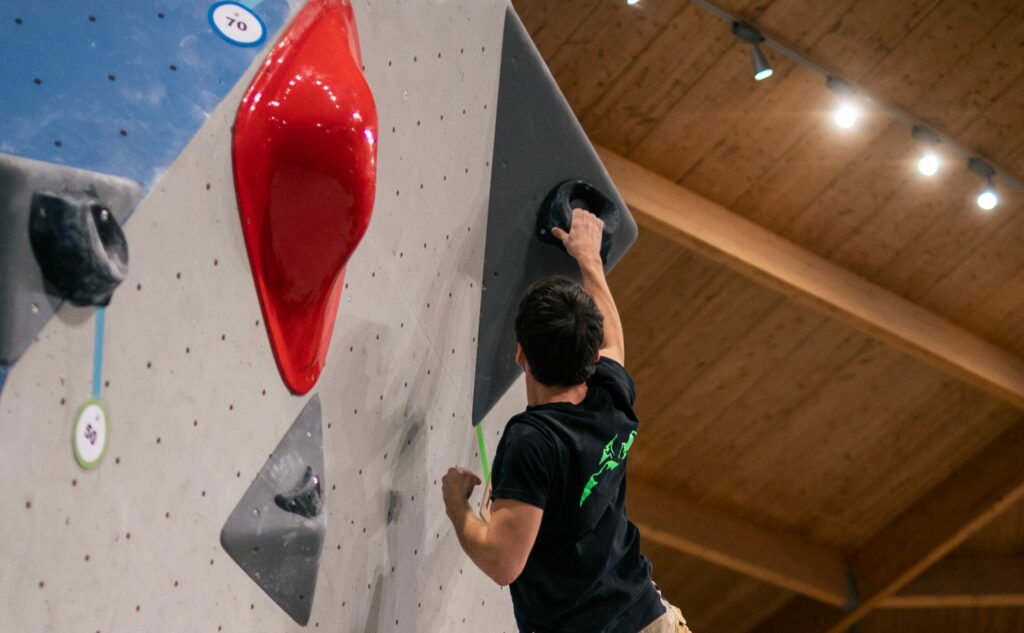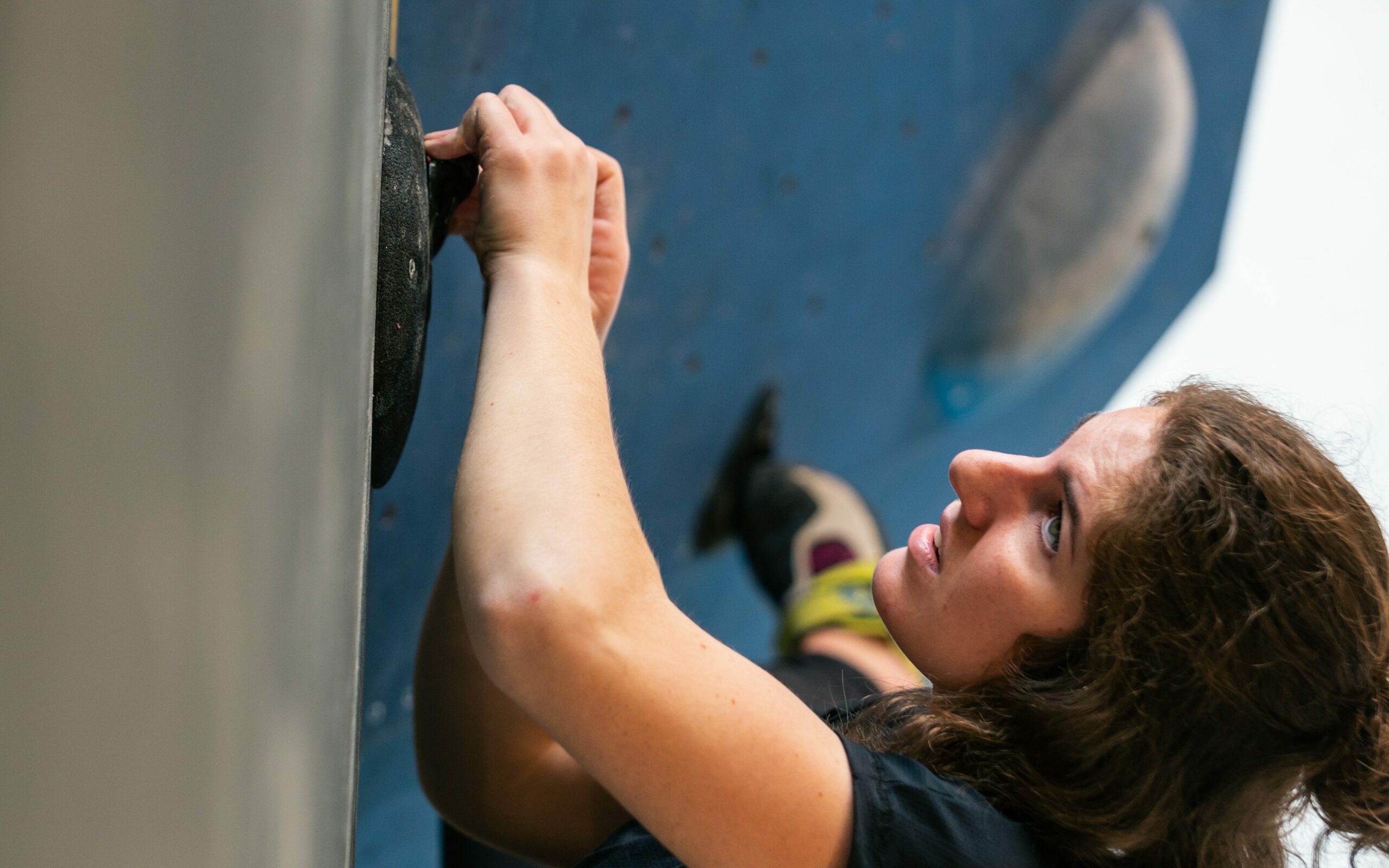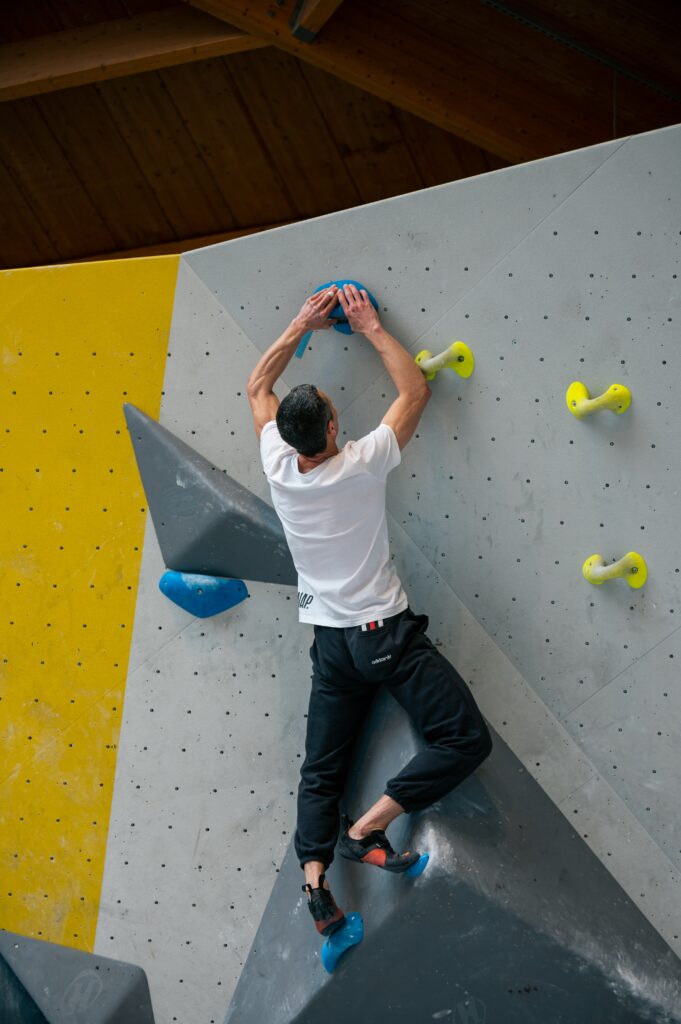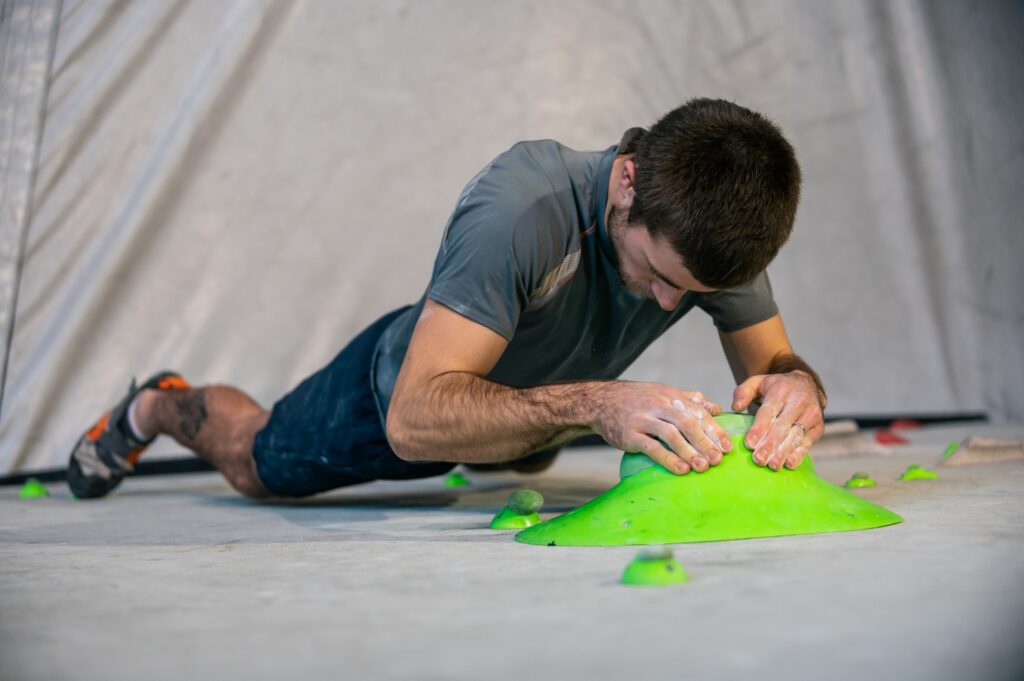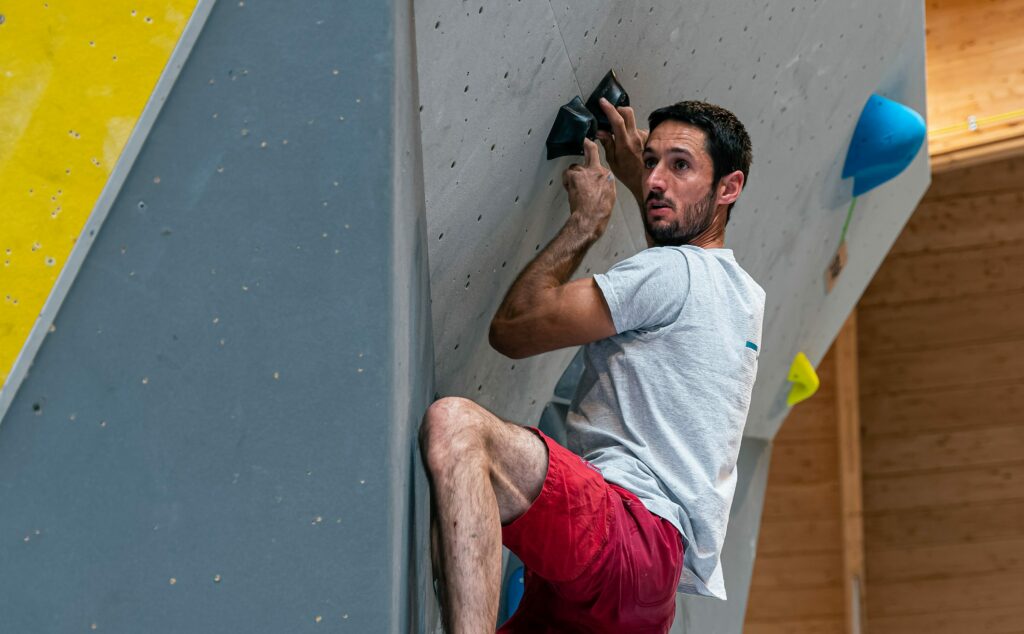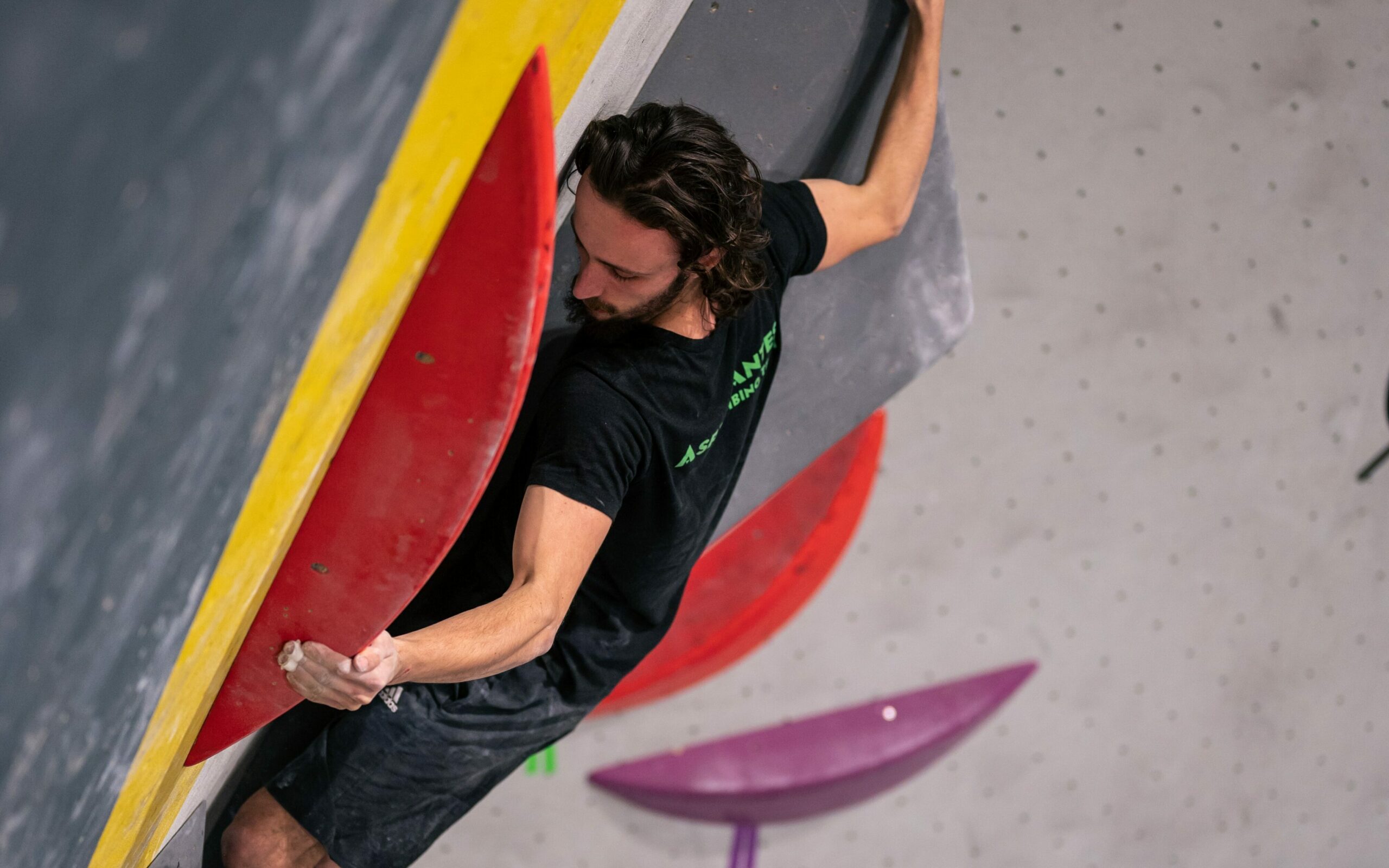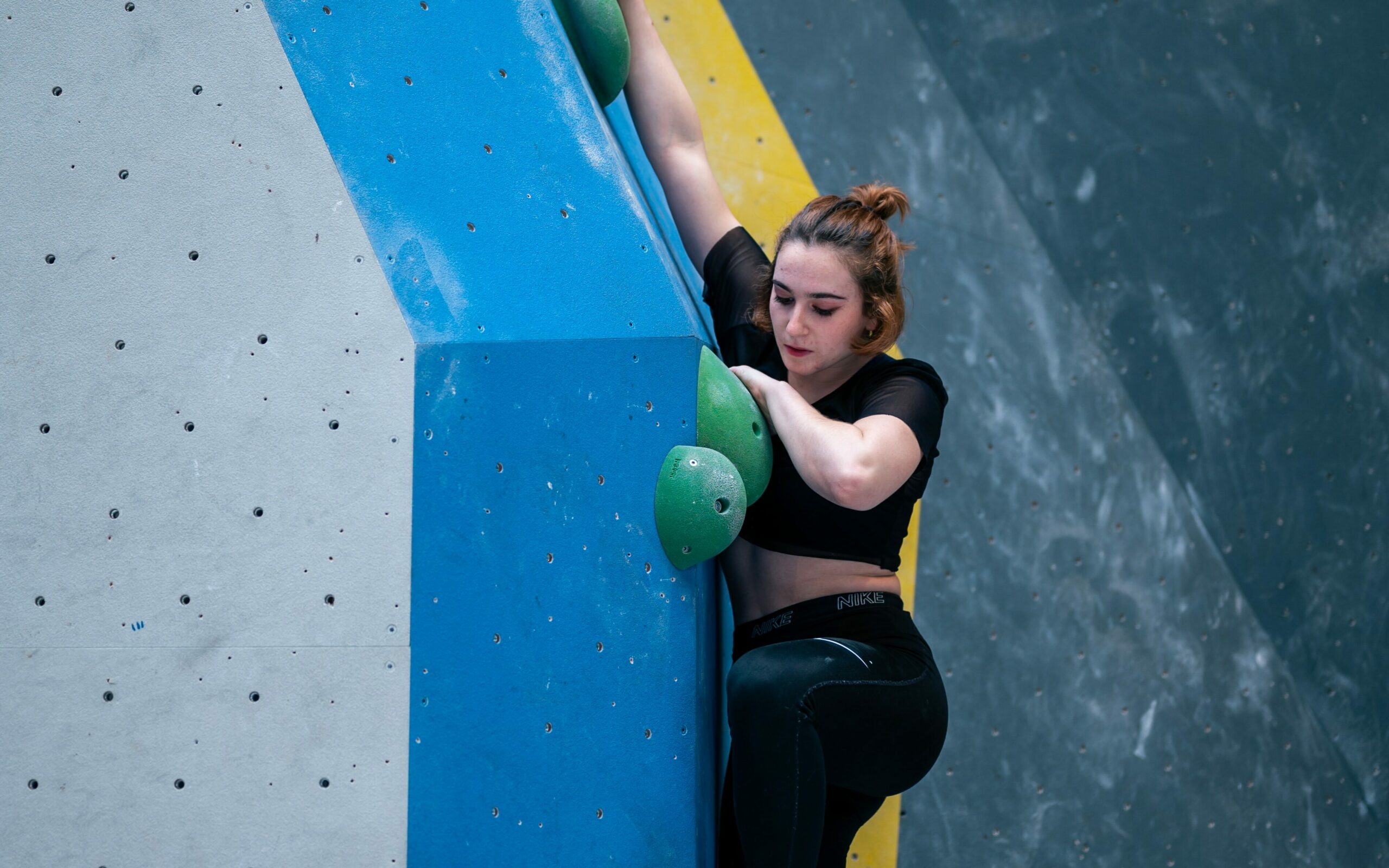If you are getting into rock climbing, one important thing to learn is the vocabulary. When you are hanging around other climbers and working on similar bouldering problems, you are likely to strike up a conversation that includes some odd rock climbing terms. We’ll go over some of the most popular lingo so you can fit right in as you start your climbing journey.
Beta
Getting beta on a climb means receiving advice. It could be a hint about the route, the starting position, the quality of a handhold, or anything. It could even be watching another climber complete the route so you can see what works. There is no shame in getting beta on a hard climb that you are projecting.
Before you ask someone for beta, make sure you know the names of climbing holds. That way, when someone tries to point out the route to you, you will be able to follow which holds they are talking about.
Crux
The crux of a climb is the hardest move or section. When you look at the rating of a climb, it is most likely based on the crux. This is especially true for bouldering routes. For more help figuring out how climbing route ratings work, be sure to check out our beginner’s guide to climbing techniques.
The difficulty of the crux can be hard to pinpoint. It can be due to a mixture of things including the type of hold, the distance between them, and the wall. For example, many overhung climbs have a crux at the overhang since transitioning from below the overhang to the wall above it is a particularly strenuous and difficult move. Another crux might be due to a particularly tough handhold and the next handhold being far away.
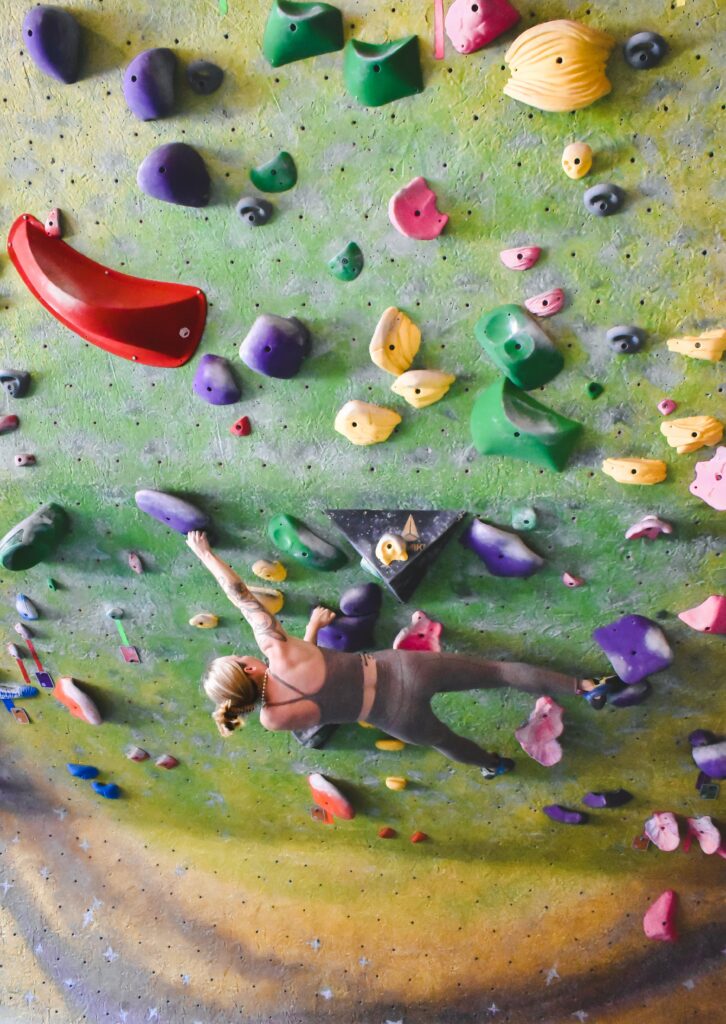
Projecting
Working on a climb as a project is known as projecting. This can be a climb above your skill level that takes many days and many tries until you can successfully climb it in one try without falling. It is always good to have a project when you climb so you can keep pushing yourself to improve. Typically climbers may have a couple projects going at the same time.
Sending
Sending a route means getting to the top in one go without falling. This can be done with or without practice, with or without beta. It is meant to be a catch-all term to describe getting to the top of a climb. Other terms used are more specific, like on-sighting, which is successfully climbing a route the first term you try it with no beta, no prior knowledge, no watching someone else do it.
Slack and Take
These are two important terms and the most common ways for climbers to direct their belayer. Slack means that you want more slack in the rope. Take means that you want the belayer to take slack and make the rope tighter. As a belayer, you may hear a climber yell ‘take’ if they think they will fall or when they need a rest so they do not lose height on the route. To learn more belay terms, you can check out a guided climbing tour. In addition to enjoying a unique outdoor climbing experience, you will learn climbing safety, belay techniques, and more.
Spotter
Spotting someone on a climb is very important. This is common at the beginning of lead climbs before the climber gets to the first anchor and on outdoor bouldering routes. The goal of a spotter is to make sure that if the climber falls, they do not hit their head. You are not standing directly under the climber trying to catch them if they fall. In this case, you will end up getting hurt yourself. Instead, a spotter stands back with their arms outstretched, elbows slightly bent, and thumbs in. If your climber falls, your main goal is to keep them upright, protect the head and neck, and make sure they fall safely onto the crash pads.
In outdoor bouldering, the role of a spotter or multiple spotters is essential. You may reposition crash pads as the climber moves, so they can land safely on it if they fall. You also may direct the climber as they fall to make sure they get on the crash pad and do not bounce off. If your climber is smaller than you, you can catch them around the waist and ease their fall. If the climber is bigger than you, you will more likely direct them with your hands on their butt to ensure they fall onto the crash pad.
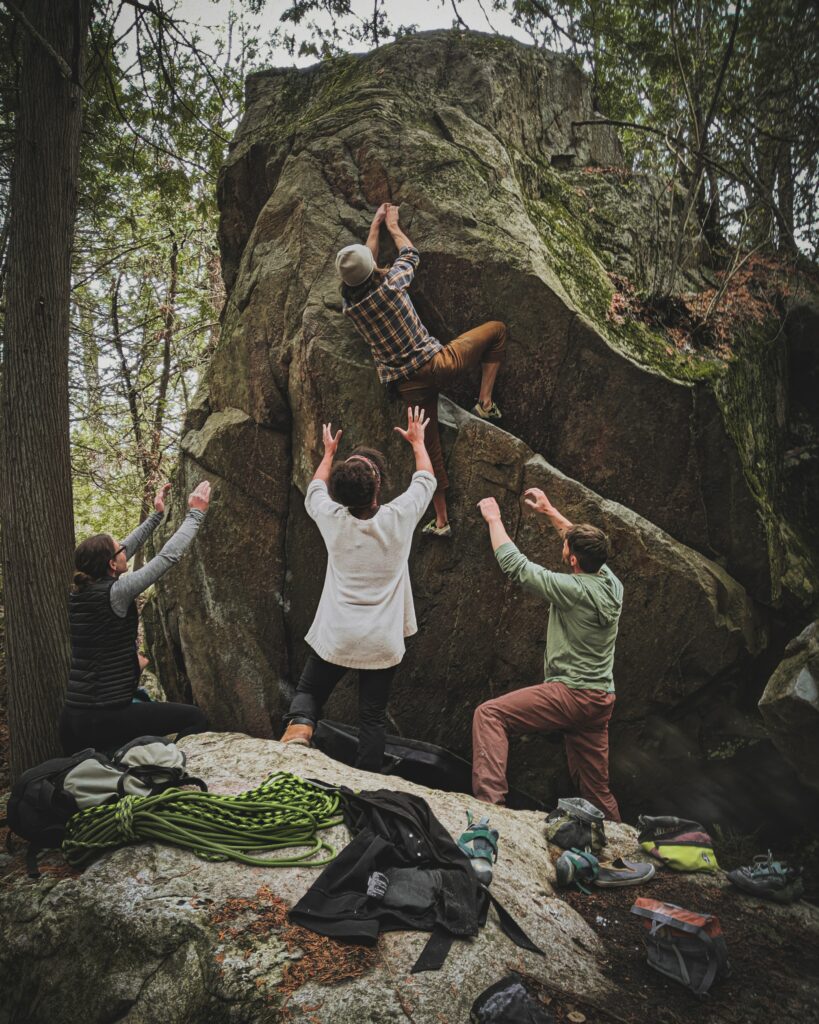
Types of Walls
Face and Slab
While a perfectly vertical wall, sometimes called a face, is the easiest to climb, many walls are not so simple. Especially if you are climbing outdoors, you are likely to encounter walls at different angles, even ones that change angle throughout the climb. A wall that tilts back away from you, and is thus less steep than vertical, is called a slab.
Climbing a slab requires balance and confidence in your footholds. It can be scary for beginners to climb slabs because you may feel like if you fall, you’ll fall into the wall. To avoid scraping yourself on the wall, be sure to hop backward when you feel like you are going to fall.
Overhangs, Roofs, and Caves
The opposite of a slab is an overhang. An overhang is any section of a wall that is more than vertical. Overhung walls tend to be a little more challenging because they require more strength to stay on the wall.
If an overhung route is so angled that it juts out over your head and forces you to climb nearly horizontally, it is called a roof. A large section of this might be called a cave, and these are generally found in bouldering or lead climbing areas. With gravity working directly against you, climbing a roof requires a lot of strength and endurance.
Final Thoughts
There are unlimited slang terms that different people use in different types of climbing. What is most important is that you are able to pick up enough to communicate effectively with other climbers when sharing route information. When climbing outdoors, another important safety tip is to establish non-verbal communication solutions with your group members. Over time, you will surely pick up more and more terms, so be patient and happy climbing!



